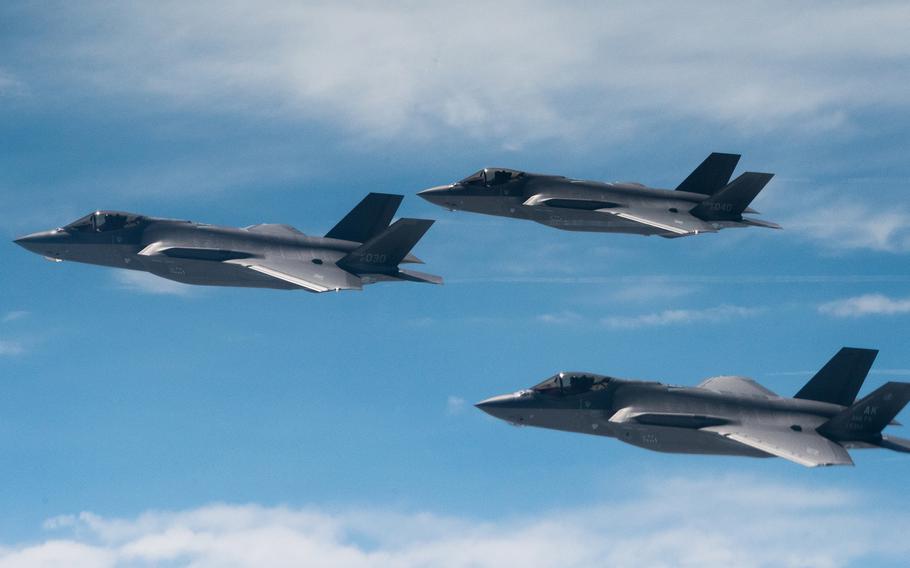
U.S. and South Korean air force F-35A Lightning II stealth fighters train over the Korean Peninsula on July 12, 2022. (Trevor Gordnier/U.S. Air Force)
SEOUL, South Korea — The South Korean air force plans to disperse its newest fleet of F-35A Lightning II stealth jets throughout the country, rather than at just one base, to better respond to North Korean threats, according to local media.
Seoul agreed to purchase the 20 F-35As, expected to be operational by 2027, from the United States for nearly $2.9 billion in December. It also agreed to buy $271 million worth of munitions for the aircraft that month.
The country received its first 40 F-35As from a $7 billion deal in 2019.
The new aircraft will be assigned to several, unspecified installations instead of operating out of Cheongju Air Base, which is home to the current F-35 fleet, unnamed officials said in a Yonhap News report Monday.
South Korea’s air force in an emailed statement declined to comment on the report Monday, citing operational security.
The F-35 developed by Lockheed Martin comes in three variants: the A model performs conventional takeoffs and landings; the B model is capable of short takeoffs and vertical landings; and the C model is designed for arrested landings on aircraft carriers.
The U.S. Air Force has already shifted its aerial assets in South Korea during the past year as part of a broader plan to improve its military posture.
Nine F-16 Fighting Falcons from the 8th Fighter Wing out of Kunsan Air Base, roughly 115 miles southwest of Seoul, were assigned to the 36th Fighter Squadron at Osan Air Base, about 30 miles south of the capital, as part of a yearlong trial in June.
The trial is a way to see if the additional F-16s would “increase our training effectiveness while also increasing our combat capability if deterrence fails,” 7th Air Force commander Lt. Gen. David Iverson said in a news release at the time.
Starting in January, the Air Force will also be retiring all 24 A-10 Thunderbolt IIs in South Korea and upgrading its F-16s in the country to modernize its fleet.
The fourth-generation F-16s will receive new avionics systems and other “pivotal upgrades” to mimic the capabilities of fifth-generation aircraft, the 7th Air Force said in a news release Nov. 13.
U.S. and South Korean F-35s frequently conduct joint exercises over the Korean Peninsula. In June, Marine Corps F-35Bs and South Korean air force F-35As took to the skies for the first live-fire demonstration with a B-1B Lancer bomber in seven years.